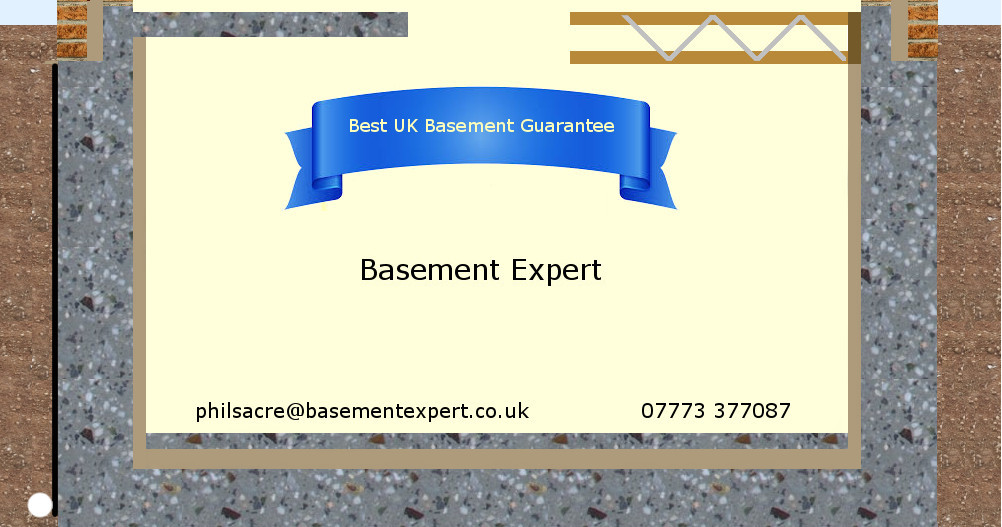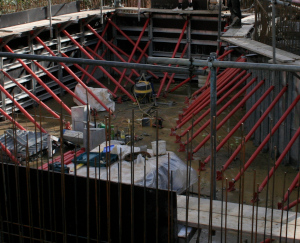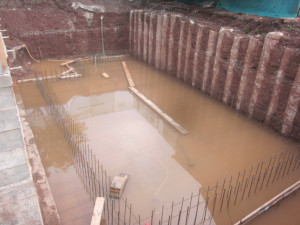|
|
Basement Structural Warranty and Basement Waterproofing Insurance Backed Guarantee
Not to be confused with my guarantee, contractor guarantees, or product certification. They are dealt with on another page. Link opens in a new tab.
This page explains
-
What to expect, and what you shouldn't expect, from a Structural Warranty.
-
What to expect, and what you shouldn't expect, from an Insurance Backed Guarantee. IBG.
A Structural Warranty is an insurance policy for your new dwelling that a lender wants to see is in place before they release funds if the property is less than 10 years since completion. Because lenders don't know about building.
A Structural Warranty Provider is an insurance broker who arranges the warranty insurance and, to make that insurance as profitable as possible, arranges or checks that every item covered by the Structural Warranty is covered first by another insurance policy, an IBG.
The IBG is covered by a personal or company guarantee. If there is a failure, the installer is called upon to correct it. If they cannot be made to fix it, the IBG is called upon. If, somehow, the installer and the IBG both fail to put the problem right, and if it is covered by the structural warranty, then the structural warranty is called upon.
You pay for insurance twice. And both insurances are re-insured again by the installer.
But beneath ground waterproofing is excluded from every structural warranty policy.
The 2009 version of BS8102 seemed to promote Internal Drainage Systems (IDSs). Often known as Structural Waterproofing. But IDSs are neither structural nor waterproofing. They failed. BS8102:2022 replaced BS8102:2009 and today the Standard discourages internal drainage systems.
Building surveyors and the like are fond of thinking that if an installer must guarantee their work in order to provide the customer with an IBG, then that will improve the installer's workmanship.
So far so good. Probably true for a kitchen, windows, electrics, and so on.
But if a basement floods, and some do, then it is the basement structure that leaks and the IDS pumps were blocked by mud that came in with the leaked water.
The IBG for the IDS covers the installation of the IDS. Not leaks through the structure.
Despite that, it has been normal - for years - for someone to demand that you get an IBG for basement waterproofing.
Instead of trying to deal with future problems, the solution is to insist that the basement structure builder fully understands that there will be inspections to confirm they are satisfying Building Regulation C2, before each payment.
By insisting on an IBG for basement waterproofing, these same people have chosen to completely ignore the legal requirement to comply with the relevant building regulation.
If you follow the article to the right, these same people may soon find themselves facing claims going back years. Because they are the ones who 'designed-in', "the contractor may leave leaks".
Building Regulation C2 states "The walls, floors and roof of the building shall adequately protect the building and people who use the building from harmful effects caused by (a) ground moisture".
These brokers, and the surveyors they employ, and even some local authority building inspectors, have been the bane of my working life for 15 years. They allow leaks because they followed, and still follow, the then current Approved Document: BS8102:2009. That document was largely written by the firms that sell internal drainage systems, including Maclennan and Newton. "Pumping out water is a no-brainer" they said.
I got nowhere with this battle while BS8102:2009 was the Approved Document. I tried to explain so many times, if you are allowed to leave leaks, worse leaks will be left as each workforce gets its next project, because they still get paid and they make more money cutting more corners.
But worse leaks let in mud. Mud blocked pumps, When it continued to rain, the basement flooded. There was mould. There was illness (harmful effect), and the law, building regulation C2, not complied with.
|
|
|
|
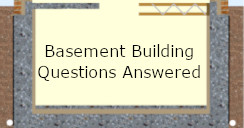
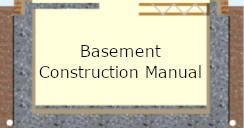
STOP PRESS
Two, possibly three, structural warranty providers are well aware that they do not cover beneath ground waterproofing.
They are Protek, BW Build Warranty, and possibly Self Build Zone.
And, as such, they do not ask for an IBG for what they do not themselves insure.
Your basement structure builder's workmanship should be improved by inspection for compliance with Building Regulation C2 before each payment.
|
STOP PRESS
A recent ruling, May 2025, by the Supreme Court held that a designer that made a bad decision, many years earlier, while working for Barratt Homes, that resulted in repairs many years later, is responsible for the cost of those repairs.
This would be a powerful legal precedent for anyone you know to now use if their designer or warranty provider insisted on internal drainage, the basement contractor left leaks, and their basement later flooded because the pumps were blocked by mud.
And they found that none of their insurances helped in any way with the damage and suffering.
The court report is here but this might be too dry to wade through.
This analysis by Blackstone Chambers might be a lot easier URS Corporation Ltd v BDW Trading Ltd. 22nd May 2025
|
|
|
After this problem emerged, The Maclennans and the Newtons sold two pumps not one. Then two chambers each with two pumps. And inspection ports and maintenance contracts. They made more money the more the problem they created grew.
But. All this time, the structural warranty excluded beneath ground waterproofing, and the IBG, the warranty provider insisted upon, excluded flood damage or compensation for illness.
BS8102:2009 got withdrawn and replaced with BS8102:2022, obviously because these systems were failing building regulation C2. The replacement Approved Document says 'fix leaks'. 'No water ingress or damp areas is acceptable'.
I hope, dear reader, that you can now understand that there is no IBG generally available for beneath ground waterproofing, because warranty providers don't need one, so there is no demand.
Slowly, very slowly, the brokers you need to impress to get a warranty are beginning to come round to what works. Which is what is best for you. If you don't have a leak you don't have a flood either. So far, only Protek, BW Build Warranty and, perhaps, Self Build Zone.
The secret behind what works isn't products, which can be easily identified and insured with an IBG. It is good workmanship throughout. No one should cover over a leak left by someone else. They should report it. Better still, there should be a formal inspection before anything can be covered over (which is a new requirement introduced by the Building Safety Act 2022).
BS8102:2022, states at
3.7 that sticky back membrane doesn't work everywhere
3.16 internal drainage membrane is not tanking
4.3.2 an ideal waterproofing solution would be defect free: design, workmanship, appropriate, damage-free
6.2.3 fix leaks
6.2.4 no water ingress or damp areas is acceptable
6.2.5 continuity of waterproofing protection from the base of the structure to 150mm above outside ground level.
The broker employs surveyors, who should know about building. But none of them understand basement building, which is civil engineering.
Surveyors say that an insurance backed guarantee improves workmanship.
But if the insurance backed guarantee is for labour and materials of internal drainage membrane, a sump, and a pump; it does not improve the workmanship of the basement structure that, because those workers see the hole in the floor where the pump will go, are incentivised to leave more and worse leaks.
My self-build customers, going back years, generally did not cover over their basement walls while they spent their remaining money on granite worktops and fancy lighting controllers. They grew to be absolutely confident that if they never saw a smear of moisture they would never see a flood either. All of them. 100%.
But my clients were the few that didn't need a mortgage and didn't expect to sell. Very few compared to today.
STOP PRESS. PROTEK.
5th March 2024. Following slow discussions with Protek - a business that promotes its structural warranties and insurance backed guarantees,
An email from their Mr Jack Jackson included "Having reviewed the policy wording I can see that this policy does not cover the below ground waterproofing." "As the policy does not cover enclosed areas below ground we will not require the insurance backed guarantee for the waterproofing of the basement as there is no cover in place for this."
Another client has since emailed to say that "BW Build Warranty" have said the same. I met BW Build Warranty at an exhibition. They confirmed this.
And, June 2025, I was told that a builder got an IBG for basement waterproofing without internal drainage from Cadis MGA Ltd, whose web site lists Protek as one of many brokers who can access their insurance.
But, please note. I am 71 years old and too old to sign a 10 year personal guarantee to give to Cadis MGA Ltd as your responsible contractor.
|
STOP PRESS. SELF BUILD ZONE.
June 28th 2025 a client sent me this extract from the warranty they have brought.

his email expressed his concern, presumably about the basement waterproofing, that if they did not have a basement IBG, they would not be able to sell if the warranty was not complete.
This does not say that either membrane or tanking must be fitted. But it does say "secure the waterproof envelope".
What is 'the waterproof envelope'?. Follow this link, then the first link to Self Build Zone, then find page 9. Near the bottom.
" excluding those parts below ground floor slab level."
The client says that he has not been asked for a basement IBG. Perhaps we can add Self Build Zone to Protek and BW who don't need re-insurance for what they don't themselves insure.
|
Perhaps you would like an IBG for basement waterproofing for your own peace of mind, independently of the warranty?
I had an IBG for basement waterproofing just before the BS changed in 2009. The client paid £8,000 for the IBG and it was assigned to NHBC, who insisted upon it. I signed the personal guarantee for 6 years and never heard a word.
If you build your basement structure, my way, with my training and supervision, it will not leak anything, ever.
then you can sign the personal guarantee for 6 to 10 years, and if you can't be made to fix a problem the IBG should sort it out.
If you must have a structural warranty, you might do best only approaching Protek or BW Build Warranty. Question Self Build Zone as well.
The first two appreciate that they don't insure beneath ground waterproofing so they don't require re-insurance for what they don't themselves insure.
Your architect, as your Principle Designer, has a new legal duty to ensure that all workmanship is proven to have been carried out well. This is far from complied with if your architect specifies all leaks to be covered over.
Inspections.
Inspections need not be by the architect themselves. They can delegate with a sound and proper agreement in place.
When I had an IBG in 2009, the IBG insurer sent an inspector to site. He signed my work off after inspecting after a period of heavy rain.
My best advice is constant supervision during the important processes. Particularly design, concrete blinding, steel reinforcement, formwork, joints, and concreting.
It amazes me how often experienced labour get concrete blinding really badly wrong. Yet it is the simplest task of all. Anything wrong costs and wastes money.
Another favourite diversion, by warranty providers and private building control bodies, is to try to claim that every word throughout BS8102:2022 applies to this project.
That has to be nonsense. Here is one reason why:
Your project is a new domestic basement yet to get the house on top.
BS 8102:2022 Protection of below ground structures against water ingress - Code of practice applies to all below ground structures.
|
|

|
If this web site is of interest, your project is not about a Victorian cellar conversion, or going under something already there, or commercial.
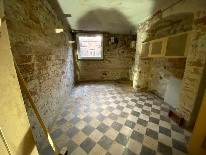
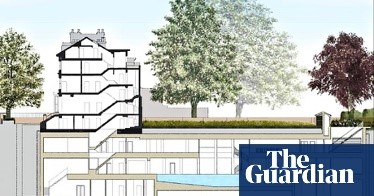
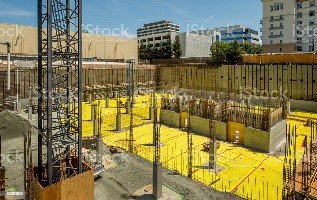
The Standard explains that a relevant path needs to be found through it. And the most obvious and appropriate, for a new domestic basement, is no leaks or damp patches.
|
|
When you get told you must have an insurance backed guarantee, IBG, immediately write a letter or email to that person. Put the conversation on record.
Include or attach the letter from DLUHC and point out that if they want you to depart from BS8102:2022, by insisting upon internal drainage when Table 2 and 3.16 of the Standard does not want it in Grade 3 accommodation, then they are legally responsible for all the consequences, damages and costs.
|
|
Click on these two images to view and save the originals and attach them to your email
|
|

|
|

|
Include in your letter, perhaps as enclosures, links or attachments, my web pages about the new laws and procedures, and perhaps this page as well.
You may have to write this to
-
The architect
-
The structural warranty provider
-
The building regulation control body
|
Explain, first of all, that as far as you have been able to find out, their insisting on an IBG means that they (architect/insurer/inspector) are insisting on a departure from BS8102:2022 known to fail and likely to incentivise or cause the leaving of leaks.
Leaks cannot all be identified and fixed until after the structure is completely weathertight, it has been cleaned and dried, and inspected before anything covers the basement inside. Because it fills up with rain and muck as soon as the wall formwork is put up.
Be in no doubt. If you have a quote from a CSSW that his company will paint or seal the concrete first, it excludes leaks. Leaks are very difficult to fix when water is coming in toward you, pushing your repair off before it sets and cures.
Mention that some leaks won't be identifiable when you complete your work and won't ever be identified if they insist they are covered over - unless and until the causes of later flood damage and ill health are investigated.
Put it on record that if the basement leaks at any time in the future, that you will blame them. You will have their correspondence and lots of photos. You or the client will sue them, perhaps the Building Safety Regulator will prosecute them. And make it clear what is not covered by the IBG (only IDS labour and materials are covered with nothing for the structure) and the client will win damages.
|
|
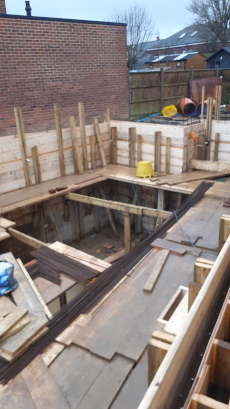
|
You are welcome to use my images in this letter or email.
I had an IBG for my work guaranteeing absolutely no leaks in 2009. But then BS8102 changed to internal drainage and IBGs have only been for internal drainage labour and materials since.
I haven't found an insurer prepared to insure workmanship again yet, not least because I got too old to be insured myself.
Back in 2009, the inspector's requirements were
Leave the basement completely uncovered by anything until
-
The roof and windows are fully weathertight
-
The basement cleared of debris, cleaned and dried
-
The basement inspected by him for leaks after a period of heavy rain
-
The basement passed by him as dry.
|
I have a page about my efforts to bring about change here. This is where you will find who I persuaded to drop their demand for an IBG.
Prepare now. When anyone tells you to have an IBG, tell them that The Building Regulations, at C2, state that it is the walls, floors and roof that must be resistant to moisture. Allowing any part to fail, not be resistant to moisture, and expecting to pump water out is plainly not conforming with the Building Regulation.
If it were ever true they wouldn't have withdrawn and replaced BS8102:2009.
|
Structural Warranties, and how they take your money as well as make you pay for their re-insurance.
I quote several sources below.
A structural warranty covers pretty much everything. But specific parts that require skill and good workmanship are re-insured by the installers' guarantees and their Insurance Backed Guarantees, which are then assigned to the structural warranty.
Basement waterproofing would fall into this category. But it is unique in that it is excluded from the warranty cover.
Your newly built basement should not be covered over but left bare until after your roof is on completely and sealed, the same with windows, the basement pumped clear of rain that collected, cleaned and dried, then inspected for leaks after a period of heavy rain.
Leaks need to be repaired and the inspection repeated after another period of heavy rain.
Only now can you cover the basement floor and walls. If you plan to paint the inside of the basement with a vapour barrier, this had to wait as well. Your two defences would be waterproof concrete and vapourproof paint inside.
Caution: The full cost of a structural warranty could be the cost of the structural warranty
+ the cost of an Insurance Backed Guarantee for basement waterproofing
+ the cost of an Insurance Backed Guarantee for roofing
+ the cost of an Insurance Backed Guarantee for render
+ the cost of an Insurance Backed Guarantee for heating
+ the cost of an Insurance Backed Guarantee for glazing
+ the cost of an Insurance Backed Guarantee for electrics
+ the cost of an Insurance Backed Guarantee for renewables
+ the cost of an Insurance Backed Guarantee for insulation, and
+ the cost of an Insurance Backed Guarantee for general building
In BS8102:2022 no internal drainage counts as a waterproofing measure. The Standard wants a basement to be repaired of leaks and two defences which can be either external drainage, waterproof concrete or vapourproof paint.
If you completely meet with two, or even exceed building regulations and BS8102:2022 with three valid waterproofing measures, then you can add whatever you want. If you or your adviser absolutely insists on internal drainage then, if the basement is known not to leak, you can add the very small and simple system I describe on the page for architects.
This is Table 2 in BS8102:2022. I am going to compare it to Newton Waterproofing (as sent to me by an architect during February 2024), for which you can get an insurance backed guarantee covering labour and materials only.

The architect emailed me the image below, saying: "Newton datasheet claims we can achieve Grade 3 to BS8102:2022 as below."
The architect highlighted the yellow. I underlined in pink and added beige highlighting.
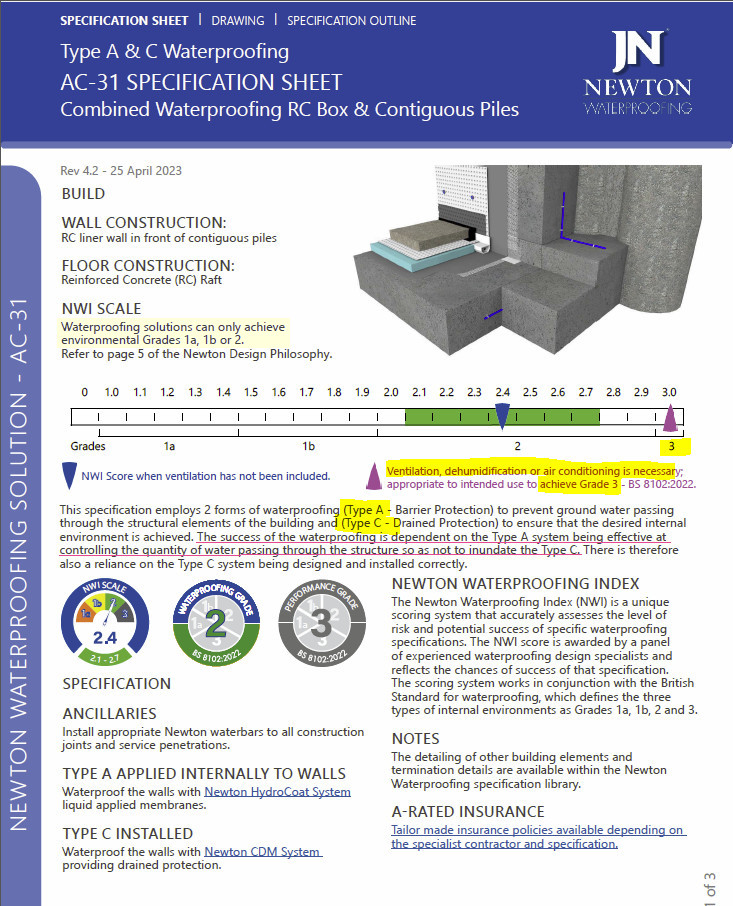
The big question is, was the architect correct, or was the architect misled?
He highlighted in yellow, the following: "to achieve Grade 3"
But Table 3 states
|
3
|
|
No water ingress or damp areasC) is acceptable.
Ventilation, dehumidification or air conditioning necessary; appropriate to the intended useD), E).
|
-
I don't think that the Standard allows Grade 3 to be achieved with ventilation, dehumidification or air conditioning. I think it is only saying that, where appropriate, have those things after "No water ingress or damp areas" is achieved."
-
I don't think that if the pumps block with mud and the basement floods, that any amount of ventilation, dehumidification or air conditioning will avoid mould, ill health, the building regulation not complied with, the law broken, and the developer prosecuted.
Newton are deliberately mis-leading. I wrote to them saying I think they are liars.
Highlighted in beige, they claim waterproofing cannot achieve Grade 3.
In my opinion, they mean that Newton waterproofing cannot achieve Grade 3.
Type A barrier protection is not a valid waterproofing defence in BS8102:2022 because it does not stick everywhere and it gets damaged by following on site operations, but not repaired.
Yet their words are, that the success is dependent upon the barrier working.
You will read in the letter from DLUHC, that deviating from the British Standard requires proof that the building regulation will not be failed.
Yet Newton rely entirely on the workmanship of others not damaging the barrier they installed. Then the pumps never all being blocked by mud.
All of it out of their control.
|
|
The truth.
Supervised waterproof concrete meets Grade 3 of BS8102:2022, if I am the supervisor.
Has done for over 100 basements for over 10 years.
No one can damage concrete later.
Leaks through concrete joints and cracks are easily fixed.
|
I found this list here.
Latent Defects are normally:
-
Faults in workmanship
-
Faults in the Design
-
Faulty Materials
-
Faulty Installation
-
Faulty Construction
|
|
|
Benefits of Latent Defect Insurance:
-
Cover can be provided for up to 12 years
-
Structural damage/ defects are covered
-
Legal and professional fees are covered
-
Building Components can be covered
-
Mechanical and Electrical services can be covered
|
|
Here are some quotations with links to sources.
From the Build Zone web site here. These quotations make it clear that beneath ground waterproofing is excluded.
Definition: Waterproof Envelope
The waterproof envelope means the ground floors, external walls, roofs, skylights, windows, doors, of a Housing Unit but excluding those parts below ground floor slab level.
F. General Exclusions
h. Ingress of water
Loss or damage caused by the ingress of water into the Basement of the Housing Unit and to those parts of
the Structure outside of the Waterproof Envelope.
p. Events normally covered under household policies
Loss or damage caused by or consequent upon fire, lightning, explosion, typhoon, hurricane, cyclone,
volcanic eruption, earthquake, storm, tempest, flood, subterranean fire or other convulsion of nature,
aircraft or other aerial devices or articles therefrom, escapes of water from tanks, apparatus or pipes,
malicious persons, theft, attempted theft or impact.
These two pages make it clear that defects arising within two years of practical completion are not covered
architectscertificate .
Premier Guarantee. Look for the Defects Insurance Period.
This quotation is also from Premier Guarantee.
"
Examples of inherent defects can include faults in the design, installation, workmanship and materials that resultantly affect the structural integrity of a building.
Structural warranties cover the full reinstatement value of a property, meaning they will restore the build back to its original specification.
"
And this is a link to a page on the
Premier Guarantee web site, current at 3rd March 2023. In case it moves or gets deleted, here you can open the .pdf version that was available the same day.
The Premier Guarantee "below ground structural waterproofing risk assessment" refers, in the second paragraph, to BS 8102 (2009).
But that Standard was withdrawn two years ago on March 31st 2022 and replaced by an entirely different approach to basement waterproofing: BS 8102:2022.
Back to the Basement Building Questions Answered menu.

|
Forward to the Basement Building Construction Manual menu.

|
For a fixed fee of £199 I will answer all your questions by email. More details here.
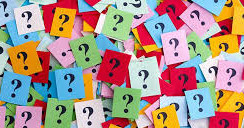
|
Previous Page
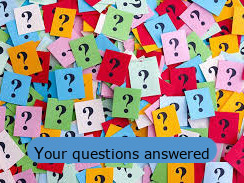
|
|
Next Page

|
|
The Page After That

|
|
|
